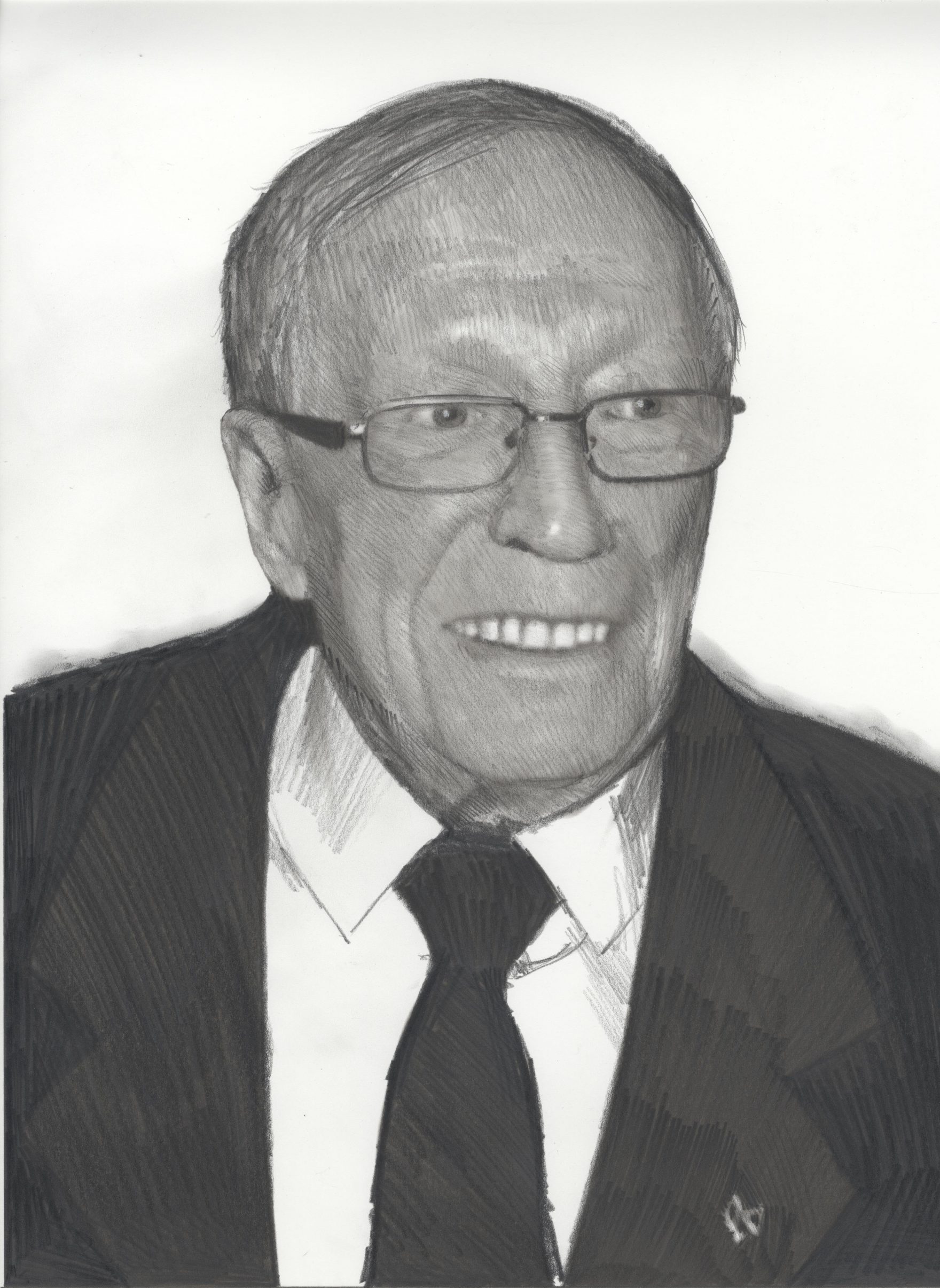William Ross Lennox

Nickname: Ross
Birth Date: March 27, 1905
Birth Place: Winnipeg, Manitoba
Death Date: November 1, 2013
Year Inducted: 2016
Service with the Royal Canadian Air Force during the Second World War began a lifetime in aviation for Ross Lennox. Post-war, he flew as a bush pilot, established records as a helicopter pilot, served as Chief Test Pilot with Pratt & Whitney Canada and continued with commercial flying after retirement
Saving Lives
William Ross Lennox was born in Manitoba in 1913. He signed up with the Royal Canadian Air Force in 1942. After flight training in the British Commonwealth Training Plan schools, he was posted as a flying instructor at the age of 21. He was sent to England where he flew DC-3s to pick up wounded soldiers in Germany, France, Greece and Belgium for transport to medical attention in England. He returned to Canada in 1946.
Exploration Flying
Choosing to continue a career in flying, in 1946 his first job was as a flying instructor with the Flin Flon Flying Club. H was soon flying geologists, prospectors and miners from Flin Flon into the north. In 1948 Lennox began flying for Hudson Bay Air Transport (HBAT), at the controls of Noordyn Norseman, Grumman Mallard, Cessna Crane and he Havilland Beaver aircraft on floats. His flying for exploration work took him to northern Saskatchewan, the Barren Lands in the Northwest Territories, norther British Columbia and the the Yukon.
Flying Helicopters
With the expansion in exploration work, HBAT felt that fixed wing aircraft were not alway adequate for new challenges, so in 1953 Lennox was sent to Okanagan Helicopters in Vancouver for training on helicopters. After training on Bell helicopters and Sikorsky models, he began flying helicopters for HBAT.
In 1958, with 6,300 hours in his log book, he joined Okanagan Helicopters to service post of the the Distant Early Warning Line (DEW Line) in the Arctic and the Mid Canada Line. By February of 1963 he had logged 10,800 hours and joined United Aircraft of Canada (UAC), which became Pratt & Whitney Canada (P&WC) in 1975. His first assignment was a project with the Royal Canadian Navy as a test pilot for Sikorsky Sea King helicopters.
A Historic Flight
In 1964, Okanagan Helicopters and British European Airways (BEA) formed a joint venture to service Royal Dutch Shell’s oil rigs some 250 kilometres offshore in the North Sea. At this point in time, no helicopter had ever made an unescorted trans-Atlantic flight. Lennox took up the challenge and together with his crew, using Sea King CF-OKY, left Montreal on May 14, 1965. The historic flight was completed on May 29 when it landed at Gatwick Airport in England.
Testing Engines
As a test pilot with P&WC, Lennox was involved in pioneer testing on the PT6 turboprop aircraft engine, first run in 1960. He began testing the engine on Beech 18 aircraft and continued testing through variants of the PT6 producing from 500 to 1,950 horsepower. He played a lead role in testing of the PT100 turboprop engine introduced in 1984, producing 2,000 to 5,000 horsepower, and later, the JT15D turbofan engine introduced in 1967.
Many Accomplishments
In 1969 and through the early 1970s, he was seconded for UAC by Sikorsky to work on government projects in northern Canada. He was the only Canadian pilot at the time to fly the Sikorsky E-64 Skycrane and worked in assessing ship-to-shore heavy lift helicopter systems for marine cargo deliveries. He also flew the Skycrane for tower installations on James Bay hydro power projects. He was named Chief Test Pilot and Head of Flight Operations for Pratt & Whitney Canada in 1977, a position he held until his retirement from the company in 1982.
He retired as a pilot, William Ross Lennox had logged over 23,400 accident-free hours in 63 different types of fixed-wing aircraft and helicopters over a span of 50 years. He died on November 1, 2013 at the age of 90.
Ross Lennox was inducted as a Member of Canada’s Aviation Hall of Fame at a ceremony held in Ottawa, Ontario in 2016.
Ross Lennox – 2016 Inductee
To return to the Inductee Page, please click here.
